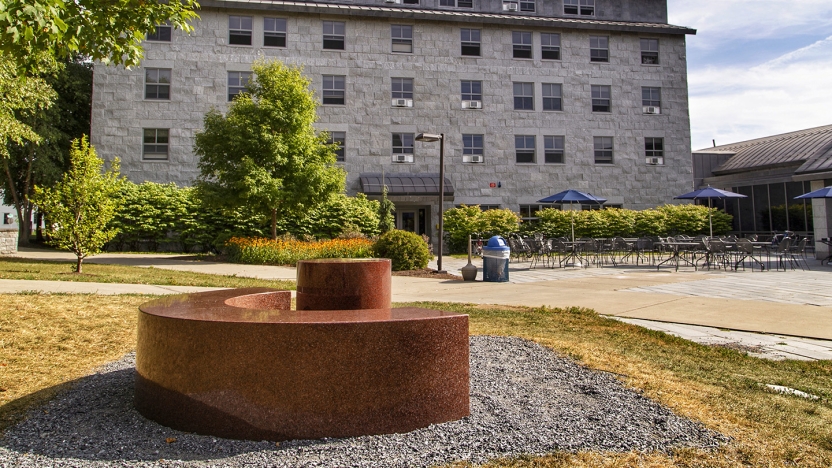Scott Burton

Scott Burton (American, 1939–1989)
Bench and Table, 1988–1989
Red Cincinnati granite; bench: 20 x 88 inches, table: 28 x 22 inches
Collection of Middlebury College Museum of Art, Vermont. Purchase of the Committee on Art in Public Places with funds provided by the Middlebury College Board of Trustees One Percent for Art Policy, 2001.002.
Location: Ross Commons Courtyard
Acclaimed for transforming the idea of public art, Scott Burton made functional sculptures that require a spectator’s presence to complete their purpose. Like conventional chairs and tables, Burton’s Bench and Table is designed not only for touch, but also use. Although originally intended to be subversive and challenge received notions about how art functions in relation to its audience, his minimal forms now seem familiar, even artful.
Burton was committed to making public art throughout his career, even though his first works were decidedly anti-establishment. Performances on New York City’s streets during the late 1960s evolved into “furniture tableaux” using chairs as surrogates for human forms. Not until 1977, however, did his unique synthesis of sculpture and furniture appear in New York galleries.
In the 1980s Burton adapted Minimalist forms to the needs of the corporate boardroom and public plaza. Although Bench and Table was not designed specifically for Middlebury College, both its form and function speak to the need for rest and repose, contemplation and conversation, amidst the bustling activity of a collegiate environment. While the title Bench and Table emphasizes the utilitarian properties of the sculpture, the minimal forms of the crescent bench and circular table are essentially poetic. Each component echoes the other’s shape and completes its form, just as the work requires a human presence to complete its function.
